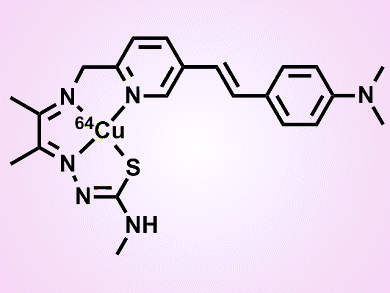Alzheimer’s disease, one of the most common forms of dementia, is a progressive neurodegenerative disorder that leads to synaptic failure and neuronal death. A major indicator of this disease is the presence of extracellular senile plaques in the brain. The main constituent of these plaques is an insoluble aggregated peptide called amyloid-β.
Paul Donnelly, University of Melbourne, Australia, and colleagues have designed and synthesized new thiosemicarbazone-pyridylhydrazine based ligands, which have functionality that allows them to bind to amyloid-β.
By incorporating the positron-emitting radioactive isotope of copper, 64Cu, into these compounds the team was able to develop an imaging agent for medical diagnostics that can cross the relatively impermeable blood–brain barrier. Laboratory tests on post mortem brain tissue and in live mice demonstrate proof of principle for the technology.
- Diagnostic Imaging Agents for Alzheimer’s Disease: Copper Radiopharmaceuticals that Target Aβ Plaques,
James L. Hickey, SinChun Lim, David J. Hayne, Brett M. Paterson, Jonathan M. White, Victor L. Villemagne, Peter Roselt, David Binns, Carleen Cullinane, Charmaine M. Jeffery, Roger I. Price, Kevin J. Barnham, Paul S. Donnelly,
J. Am. Chem. Soc. 2013.
DOI: 10.1021/ja4057807




